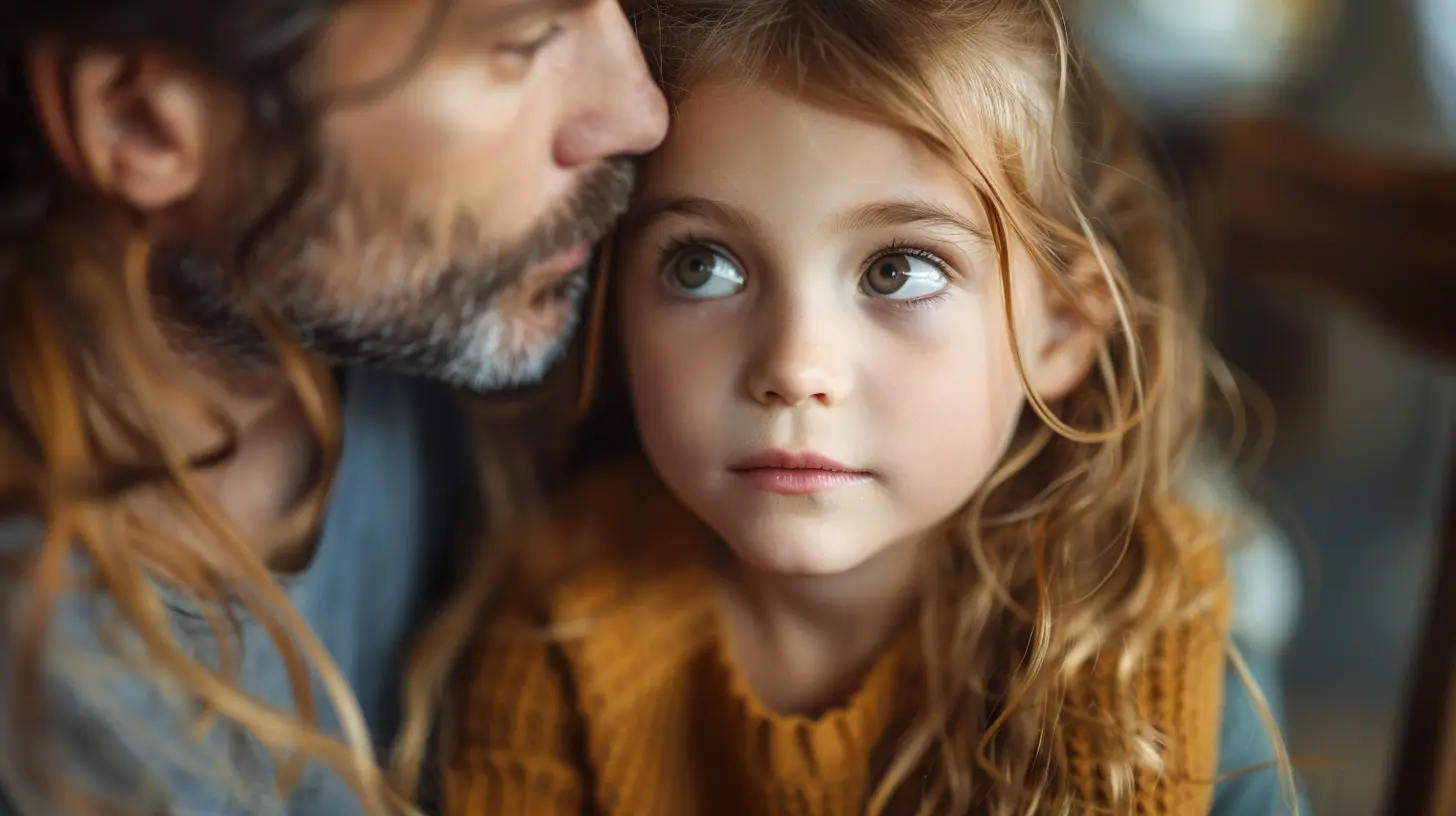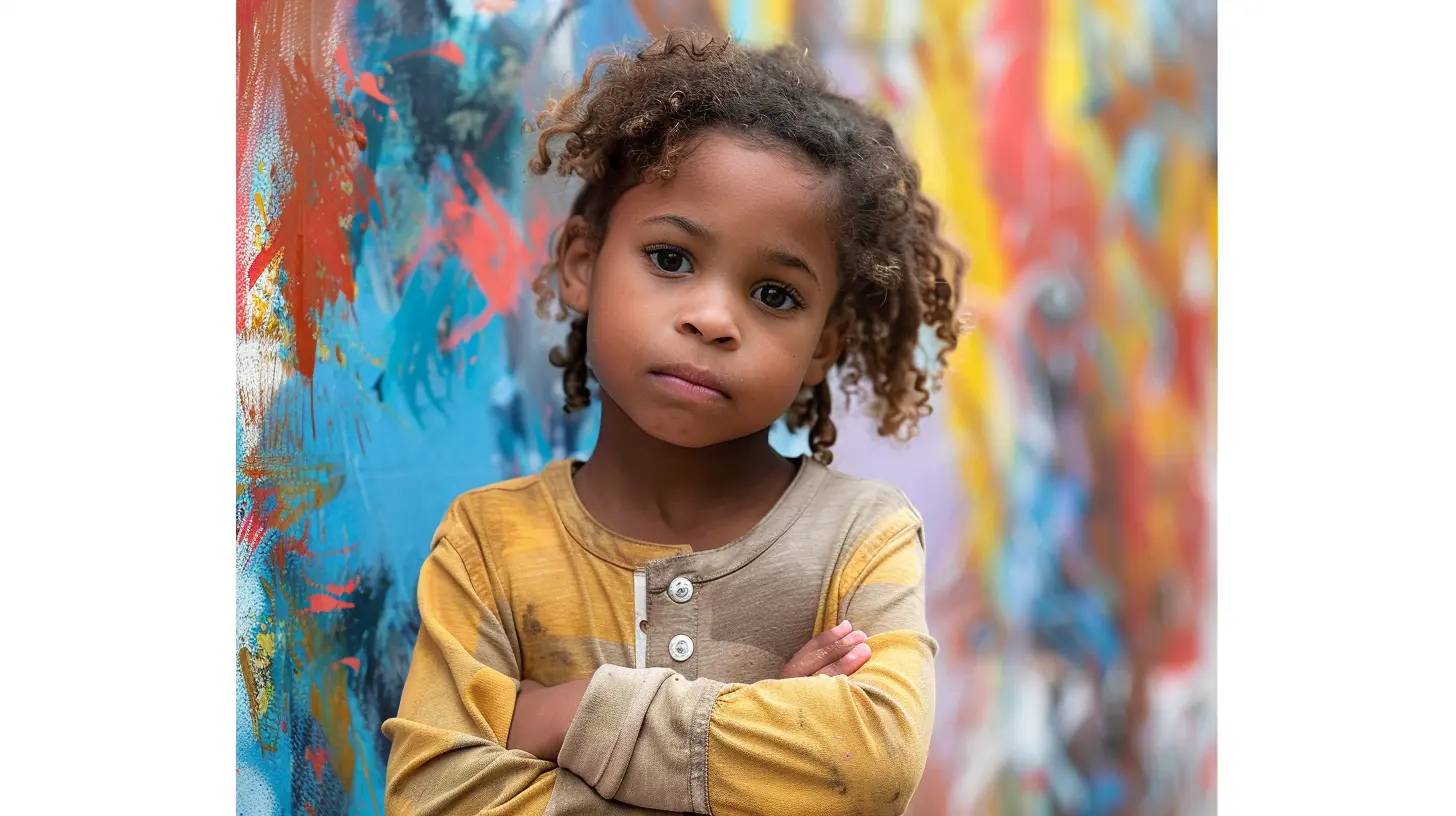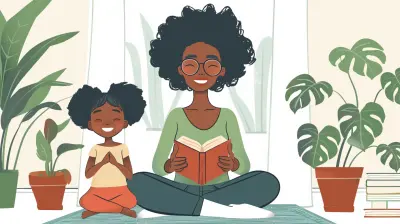The Art of Apologizing: Helping Kids Own Their Mistakes
26 June 2025
Let’s be honest — apologizing can be tough, even for adults. Now imagine being a kid, still learning how the world works, and being told they’ve messed up. It’s no wonder many little ones would rather hide under the couch than admit they were wrong. But here’s the thing: learning to apologize isn’t just about saying “I’m sorry.” It’s about understanding empathy, taking responsibility, and growing into a kind, respectful human.
In this article, we’re diving deep into the art of apologizing, and how parents can help their children not only say the words, but mean them. This isn’t about forcing an apology or embarrassing your kid into admitting guilt. It’s about guiding them toward emotional intelligence and responsibility — two big life skills they’ll thank you for later.
Why Apologizing Matters More Than We Think
Apologies are more than social niceties. They carry weight. When a child learns how to apologize sincerely, they’re learning how to understand another person's feelings. That’s empathy in action! They’re also learning how to own their behavior — win or lose.Saying “I’m sorry” can rebuild trust, mend relationships, and release guilt. It’s like giving a hug to someone’s feelings. Teaching kids to apologize properly helps them build stronger friendships, resolve conflicts, and develop self-awareness from a young age.
Let’s face it — we all make mistakes. But it’s what we do after that really shows our character.
The Common Mistakes Parents Make
Before we get into the how-to’s, let’s talk about what not to do. We’ve all been there — our child grabs a toy, hits a sibling, or says something hurtful. What’s our knee-jerk reaction? “Say you’re sorry. Right now.”Yikes. That might get a mumbled “sorry,” but it’s usually said with no feeling and zero understanding. The child’s just repeating what they’re told.
Another common pitfall? Using shame. Making a child feel like they’re “bad” for messing up doesn’t teach responsibility — it teaches fear. And long-term, that can damage their self-esteem.
Instead, think of yourself as a coach. Your job isn’t to scold, it’s to teach. And above all, to model the behavior you want to see.
Step-By-Step: Teaching Kids the Right Way to Apologize
Alright, let’s get into the good stuff. Teaching kids how to apologize authentically doesn’t happen overnight. But with patience and repetition, it becomes second nature.1. Start With Empathy
Before you jump into the “sorry,” help your child understand how their actions affected someone else.Try asking:
- “How do you think your friend felt when you took their toy?”
- “Would you feel sad if someone said that to you?”
This helps your child connect the dots. Once they can identify the emotion, they’re more likely to feel genuine regret — and that’s the foundation of a real apology.
2. Encourage Ownership, Not Blame
A real apology starts with “I,” not “you made me” or “if you weren't being annoying…”Kids need to understand that their actions are theirs alone. You can say:
- “It’s okay to make mistakes. But it’s important to take responsibility for them.”
- “Let’s think about what you did and how we can make it right.”
When kids own their behavior, they gain confidence and control over how they act in the future.
3. Teach the Anatomy of a Good Apology
Sincere apologies have a few key parts:1. Acknowledgment – “I pushed you.”
2. Responsibility – “It was my fault.”
3. Regret – “I’m sorry I hurt you.”
4. Making Amends – “Is there anything I can do to help?”
You can practice this with role-play. Act out small scenarios and let your child walk through the steps. It’s like rehearsal for real life!
4. Model What You Want to See
Kids are expert mimics. If they see you apologizing — to them, to your partner, to the cashier you snapped at — they’ll pick up on that.When you mess up (and you will), own it.
Say things like:
- “I’m sorry I raised my voice earlier. That wasn’t fair to you.”
- “I forgot I promised to play with you, and I know that hurt your feelings. I’m really sorry.”
This teaches them that everyone makes mistakes and that taking responsibility is a sign of strength.
5. Praise Effort, Not Perfection
Let’s not expect magical, Oscar-worthy apologies every time. If your child mutters an apology but makes an effort to understand and fix things later, that’s a win.Say:
- “I noticed you tried to make it better after the fight. That was kind.”
- “It was hard for you to say sorry, but I’m proud of you for doing it.”
Progress over perfection. Always.
What If They Refuse to Apologize?
Ah, the stubborn standoff. You know the one.If your child digs in their heels, don’t force the issue. Instead, give them space and guide them later when they’re calm. Sometimes, emotions need time to settle before empathy can kick in.
You might say:
- “I can see you're upset. Let’s talk about it after you've had a break.”
- “You're not ready to say sorry now, and that's okay. But we will come back and talk about it soon.”
Genuine apologies can’t be forced. They have to come from inside.
Helping Older Kids and Tweens Apologize
As kids get older, apologies can actually get trickier. Pride kicks in. They become more self-aware and worried about social consequences.This is where your conversations evolve.
Talk about how owning mistakes actually builds respect. Use real-life examples (without lecturing). Maybe someone at work apologized and earned your admiration — tell them about that. Show them that maturity means owning your part, not defending bad behavior.
Teaching Reparations: More Than “Sorry”
Sometimes words aren’t enough.If your child broke a sibling’s toy, help them repair it or use their allowance to buy a new one. If they lied, talk about how they can rebuild trust.
This teaches that actions have consequences — and that making amends can be empowering.
Think of it like this: apologies are the key, but reparations are the door. One opens the way to healing; the other walks through it.
Building an Apology Culture at Home
Want to make apologizing just part of life? Start building a family culture where mistakes are spoken about openly and gently.At dinner, share a small mistake you made that day and how you handled it. Let your kids see that grown-ups drop the ball too — and it doesn’t mean the world ends.
Create a “repair zone” or “peace corner,” a safe, calming space where siblings can cool down and talk things out. No blame, just connection.
The more you normalize the process, the less intimidating it becomes.
When to Step In — And When to Step Back
As parents, it’s tempting to rescue our kids from the discomfort of guilt. But that’s part of the lesson too.Let your child sit with the consequences of their behavior (within reason). Don’t swoop in and smooth it over for them. Trust that they’re capable of making things right — and support them without doing the work for them.
That balance of guidance and independence helps solidify real learning.
The Long Game: Raising Empathetic, Accountable Humans
Here’s the magic: when kids learn to apologize well, they’re also learning to forgive, to grow, and to connect.They become adults who take responsibility instead of blaming others. They become partners who can admit when they’re wrong. They become leaders who own their decisions and learn from their missteps.
This isn’t just about cleaning up after arguments. It’s about shaping character.
Final Thoughts
The art of apologizing isn’t about perfection — it’s about progress. As parents, our role is to create a safe, supportive space where kids can learn to make mistakes, understand them, and make things right.It takes time, patience, and more than a few awkward conversations. But every “I’m sorry” spoken from the heart is a step toward kindness, self-awareness, and emotional maturity.
So next time your little one messes up, take a breath. Instead of pushing for a quick sorry, lean in with curiosity, empathy, and a whole lot of love.
After all, the real art of apologizing? It’s not just about saying it — it’s about feeling it.
all images in this post were generated using AI tools
Category:
Emotional IntelligenceAuthor:

Zelda Gill
Discussion
rate this article
1 comments
Macey Lawrence
Empowering kids through heartfelt apologies!
June 28, 2025 at 3:15 AM

Zelda Gill
Absolutely! Heartfelt apologies teach kids accountability and empathy, fostering stronger relationships and personal growth.


